Panel monitors are essential components in modern industrial automation systems and various retail sectors, offering real-time visual displays and system monitoring capabilities. Unlike industrial panel PCs, which are all-in-one computing solutions, panel monitors act as display units that depend on external devices like PLCs (Programmable Logic Controllers), computers, or control systems to receive signals and present information. Designed for durability and versatility, panel monitors are ideal for use in both harsh industrial environments and more conventional, retail settings. This article delves into the crucial features, benefits, and widespread applications of industrial and retail panel monitors.
What is a Panel Monitor?
A panel monitor is a specialized display device designed for use in industrial and retail environments. These monitors provide a visual interface between users and external systems, without the internal computing capabilities of panel PCs. Instead, they display data received from external sources such as computers, PLCs, or other control systems.
Engineered for reliability and performance, panel monitors are built with rugged, durable casings that make them suitable for industrial conditions. However, they are also designed for versatility, which allows them to be used in more conventional environments, such as retail stores, airports, and public spaces. The ability to operate in challenging conditions, including exposure to dust, moisture, and physical impact, makes them a top choice for industries requiring high-performance displays.
- Ready to enhance your visual control systems?
Buy Industrial and Retail Panel Monitors Now
Explore our range of high-quality, durable solutions Industrial and Retail Panel Monitors: Enhancing Visual Control Across Sectors
Key Features and Benefits of Panel Monitors
Panel monitors offer a range of features that make them indispensable in both industrial and retail applications. From rugged durability to high-resolution displays and flexible connectivity options, these monitors are designed to meet the demands of various environments while providing optimal performance and user experience. Here are the key benefits:
1. Durability and Environmental Resistance
Panel monitors are built to endure the demands of industrial environments. They feature rugged casings and often sealed construction to resist dust, moisture, and temperature fluctuations. With high IP ratings (e.g., IP65, IP67), these monitors are ideal for use in challenging settings like manufacturing facilities, warehouses, and outdoor locations. Their robust design ensures reliability in environments subject to vibrations, extreme temperatures, and contaminant exposure.
2. High-Resolution Displays for Clear Visual Feedback
One of the standout features of industrial and retail panel monitors is their ability to provide high-resolution displays that ensure clarity when displaying critical data in real-time. Available in sizes from 7" to 21", these monitors can show everything from basic text to complex graphics, making it easier for operators to interpret data and make decisions. Depending on the complexity of the task, panel monitors come in a range of resolutions, from HD to Full HD or even higher for detailed displays.
3. Flexible Connectivity Options for Versatile Use
Panel monitors offer a variety of connectivity options, including HDMI, VGA, DVI, and DisplayPort, which makes them compatible with a broad range of control systems. This versatility allows seamless integration into various industrial setups, from PLCs to computers and other control equipment. Furthermore, panel monitors are equally suitable for retail applications, connecting effortlessly to digital signage systems, retail kiosks, and other visual display solutions.
4. Touchscreen and Non-Touchscreen Options
Panel monitors come in both touchscreen and non-touchscreen versions, allowing users to choose the appropriate model for their specific needs. Touchscreen monitors enable direct interaction with the system, streamlining operations and eliminating the need for external peripherals. Non-touchscreen models, on the other hand, are ideal for passive display applications where user interaction is unnecessary. The decision between touchscreen and non-touchscreen models depends on the level of interaction required by the application.
Industrial Applications of Panel Monitors
These monitors are integrated into essential systems that support machinery, process control, and remote monitoring, helping operators manage complex tasks efficiently. Here are some key industrial applications:
1. Control Panels for Industrial Machinery
Panel monitors are commonly used in industrial machinery control panels, providing real-time visual feedback on machine health, system performance, and process status. In manufacturing plants, these monitors are critical for monitoring equipment performance and ensuring smooth operations. Operators rely on panel monitors to receive up-to-date information on machinery and system processes, allowing them to respond quickly to potential issues.
2. Process Control and Monitoring Systems
Industries such as chemical manufacturing, pharmaceuticals, and energy rely on panel monitors to display key data from process control systems. These systems often track variables such as temperature, pressure, and flow rates, and panel monitors ensure that operators can monitor these parameters in real-time. The ability to quickly identify anomalies or operational issues enhances overall system performance and safety.
3. Machine Vision Systems for Quality Control
Machine vision systems used in quality control often depend on industrial panel monitors to display real-time camera feeds and analysis data. These monitors allow operators to inspect products for defects, guide robotic systems, and ensure that production standards are met. With high-resolution displays, panel monitors provide the visual clarity needed for precise decision-making and quality assurance.
4. Remote Monitoring and SCADA Systems
Panel monitors are integral to remote monitoring systems used in SCADA (Supervisory Control and Data Acquisition) setups, which are commonly found in large facilities like power plants, water treatment plants, and manufacturing sites. These monitors allow operators to oversee operations from a central location, quickly identify performance issues, and respond to potential system failures.
Retail Applications of Panel Monitors
Beyond industrial settings, panel monitors also offer valuable solutions for retail applications that require high-quality visual displays. From enhancing customer experiences to providing real-time information in public spaces, these monitors serve as versatile tools in a variety of industries. Below are some of the most common retail applications:
1. Digital Signage for Advertising and Information Display
In retail settings, panel monitors are frequently used in digital signage applications, where they display advertisements, announcements, and important real-time information. These monitors are found in a wide range of locations, from shopping malls and airports to restaurants and bus stations. In retail environments, panel monitors are used for interactive product catalogs, customer engagement, and promoting special offers.
2. Self-Service Kiosks in Retail and Hospitality
Panel monitors are often incorporated into self-service kiosks, which are used in retail, hospitality, and healthcare industries. These kiosks enable customers to check in, make orders, access information, or process payments independently. The touchscreen functionality of these monitors enhances the customer experience by enabling intuitive interaction and reducing the need for direct human assistance.
3. Wayfinding and Information Displays in Airports and Transportation Hubs
Panel monitors are commonly deployed in airports, train stations, and bus terminals to display real-time information such as flight schedules, train departures, and general passenger instructions. These monitors are essential for guiding travelers and ensuring smooth operations by providing clear, up-to-date information about transport schedules and updates.
4. Retail Environments for Interactive Displays and Wayfinding
In retail environments, panel monitors are used for product information, wayfinding, and interactive displays. Shoppers can use touchscreen monitors to find store locations, view promotions, or interact with digital product catalogs. In larger malls, these monitors help visitors navigate the premises, enhancing their shopping experience by providing them with easy-to-access information.|
Choosing the Right Panel Monitor for Your Application
Selecting the right panel monitor for your specific needs is essential to ensure optimal performance, longevity, and ease of use. Whether you're outfitting an industrial control system or setting up a digital signage display, understanding the key factors that influence monitor choice will help you make an informed decision. Consider the following aspects to ensure that your panel monitor is well-suited to your application:
1. Choosing Screen Size and Resolution
Panel monitors come in various screen sizes, typically ranging from 7" to 21". When selecting the right monitor, consider both the complexity of the data being displayed and the space available for installation. Higher resolutions, such as Full HD or 4K, are ideal for applications that require more detailed visual feedback.
2. Connectivity and Compatibility Considerations
Ensure the monitor is compatible with your existing control systems. Panel monitors offer a range of input options, including HDMI, VGA, DVI, and DisplayPort. Make sure the monitor supports the connectivity options necessary for your application, ensuring seamless integration with your equipment.
3. Consider Environmental Factors
For industrial environments, consider the IP rating of the monitor, which indicates its resistance to dust and water. A high IP rating (e.g., IP65, IP67) ensures the monitor can withstand the challenging conditions found in factories, warehouses, or outdoor environments. Retail settings may have less demanding environmental factors but durability is still an important consideration.
4. Touchscreen vs. Non-Touchscreen
Assess whether a touchscreen is necessary for your application. If user interaction is required, a touchscreen panel monitor is the ideal choice. For passive display applications, non-touchscreen models are a more suitable option.
Conclusion
Panel monitors offer critical visual feedback in both industrial and retail applications. They are indispensable in industrial environments for machinery control, process monitoring, and remote system oversight. In retail settings, they serve important functions in digital signage, self-service kiosks, and customer interaction. With their rugged construction, high-resolution displays, and flexible connectivity options, panel monitors provide an effective and reliable tool for enhancing visual control across various sectors.
- Buy Industrial and Retail Panel Monitors Now
Explore our range of high-quality, durable solutions Industrial and Retail Panel Monitors: Enhancing Visual Control Across Sectors



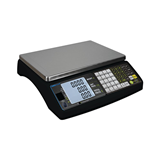
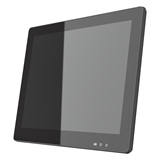
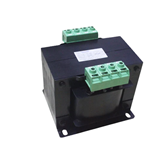

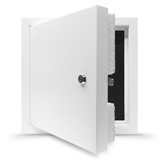
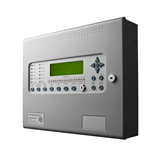
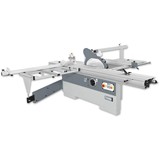
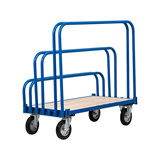
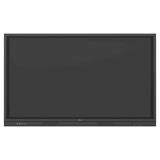
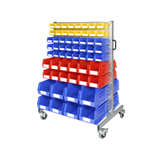
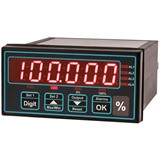
(1)-205x205.jpg)











